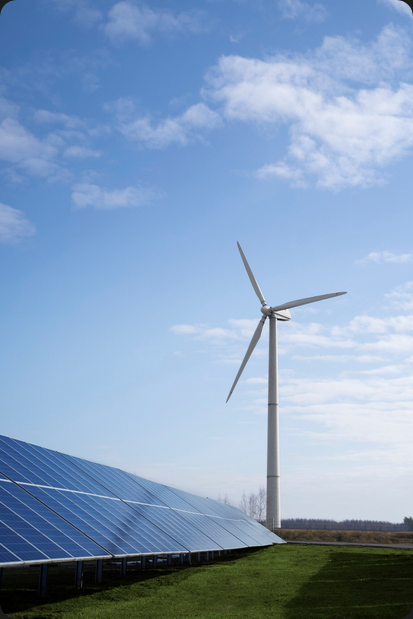The comeback is real — and it’s happening where smokestacks once ruled the skyline. America’s factory towns are reinventing themselves with tech and clean energy, and the momentum is hard to miss. If you care about jobs, affordability, and tangible progress, factory towns are suddenly the most interesting places on the map.
The New American Comeback: Why factory towns are buzzing again
“Rust Belt” isn’t the vibe anymore. Across the Midwest, South, and Mountain West, factory towns are landing battery plants, turbine assembly, chip packaging, and advanced materials labs. And here’s the twist: the old “move to a mega-city to find opportunity” playbook is quietly flipping. Homes are affordable, commutes are short, and work is interesting again.
What changed? A once-in-a-generation alignment. Clean-energy manufacturing is scaling fast. Tech has moved inside the plant — not just software in a downtown HQ, but sensors, robotics, and AI at the edge. And public incentives smoothed the runway for companies to choose places with land, power, and a willing workforce. For a zoomed-out take on why this is accelerating local prosperity, see the analysis on the economic benefits of clean power in manufacturing regions — it’s a helpful backdrop for what you’re seeing on the ground.
“Seeing small towns hire again feels huge.” — an X user
Green energy as a jobs engine ⚡
Clean energy isn’t a feel-good bumper sticker; it’s a complex industry with supply chains, construction gigs, operations roles, and specialized manufacturing that sticks around. To get a clean read on who’s hiring and where, the U.S. Energy & Employment Report (USEER) data is the gold standard, with state and county tools you can explore. If you like receipts, the 2024 USEER national report (PDF) breaks down how solar, wind, grid modernization, and storage are translating into paychecks and business formation across the country.
Zoom into a typical “comeback” county and the story looks like this: a wind-component plant announces an expansion, a battery pack line ramps up, and a local community college launches a fast-track certificate to feed the pipeline. Within a year, coffee shops extend hours, a machine shop upgrades its CNC line, and the tax base can afford a new roof for the high school gym. Not bad for places that spent a decade treading water.
“Green jobs aren’t hype — my cousin just got hired at a turbine plant.” — a TikTok user
Tech inside the plants: from sensors to edge AI 🤖
Let’s talk shop-floor reality. The new factory hums with data: vision systems counting defects at line speed, predictive maintenance catching a bad bearing before a shift goes sideways, cobots that don’t need overtime snacks. This isn’t science fiction — it’s what happens when you push computation closer to the machines that matter.
If you want a primer on why this matters, look at how edge AI powering warehouse robots and factory vision systems changes the day-to-day — fewer slowdowns, tighter quality, and safer workflows. Pair that with proven methods for capturing the true value of Industry 4.0 and you get the puzzle pieces for higher throughput without burning out crews. The headline? Tech isn’t replacing factory towns; it’s making them competitive in the markets that actually exist now.
On the hiring side, “tech” doesn’t only mean PhDs. Plants need controls techs, instrumentation specialists, materials handlers with digital twins on their tablets, and QA operators who understand what a dashboard is trying to tell them. Upskill someone for six weeks and you’ve often got a higher-wage role filled by a local who’s going to stick around.
Solar, wind, and storage: the new industrial stack 🌬️🔋
One reason factory towns are hot again: supply chains are re-rooting closer to customers. Heavy components are expensive to ship; policy, reliability, and geopolitics all nudge companies to build here. The near-term result is practical: parts that used to cross an ocean are now arriving from two counties over.
Curious about where solar is heading? This overview of innovations in solar energy to watch lays out why module designs, power electronics, and software optimization are changing the economics — a big deal for communities bidding on projects. Meanwhile, if you’re picking a training path or negotiating an offer, this snapshot of top-paying green jobs in 2025 shows why grid, battery, and wind roles are drawing talent from old-school oil and gas as well as from IT.
In storage, multi-hour batteries and hybrid wind-solar-storage sites are turning intermittency into a scheduling problem rather than a deal-breaker. For grid operators, that’s like swapping out a dice roll for a calendar reminder. For towns with industrial sites and solid transmission, it’s a welcome second life for properties that once housed smokestacks.
People and places: who actually benefits? 🧭
A resurgence only counts if it shows up in real lives. So here’s what “benefit” looks like on a Tuesday afternoon: the machine-tech who stops renting and buys a starter home; the diner that reopens dinner service; the high school robotics team that suddenly has five mentors from the new plant. Local chambers report new LLC filings, and a downtown once full of papered windows gets its first co-working space.
To keep expectations honest, not every town will land a $3B gigafactory. But many can carve out a niche service stack around logistics, maintenance, machining, component sub-assembly, or workforce training. For a data-forward look at where impact tends to land — wages, taxes, and local multipliers — review the evidence on clean-energy manufacturing’s local impact and pay attention to the county-level splits. The signal: benefits grow when towns align land-use approvals, utility interconnects, and workforce programs without red tape.
“Moved back home for a battery-plant job — best decision I’ve made.” — a Redditor
The playbook: what smart factory towns are doing now
Bundling sites and permits. Companies hate uncertainty. Package a shovel-ready site with clear timelines for utilities, road improvements, and environmental approvals.
Training that fits the machines. Don’t build generic programs; build short, stackable certificates matched to actual PLCs, robots, and metrology tools on your employers’ floors.
Housing, childcare, transit. Workers can’t take the job if you make life logistics impossible. Public-private partnerships here punch way above their weight.
Supplier flywheels. Courting one anchor tenant is step one; building a sticky network of second- and third-tier suppliers protects the gains when cycles turn.
Tell your story. If your town is hiring, say so. Post transparent wage bands, shift schedules, and training stipends. Talent will scroll right past vague promises.
What comes next for factory towns
The next two years are about friction removal: interconnect queues, transformer delays, permitting throughput, and community benefits that feel real, not performative. Expect more hybrid roles (operators who can troubleshoot a robot and interpret a dashboard), and more cross-pollination between energy and manufacturing (e.g., a battery module line inside a general assembly plant).
If you’re a job seeker or a mayor, bookmark the USEER public data tools for states and counties — they’re useful for targeting training dollars and recruiting campaigns. And keep an eye on how local universities and community colleges partner with plants; the quickest wins come when education moves at the speed of production.
Quick reality checks (so the hype doesn’t outpace the work)
- Not every project lands. Site selection is competitive; keep a Plan B list of prospects and suppliers.
- Automation changes roles. It doesn’t kill all jobs, but it reshapes them; invest in upskilling, not just ribbon-cuttings.
- Grid constraints are real. Storage helps, but substations and transmission still determine the ceiling.
- Community trust matters. Make benefits concrete: apprenticeships, scholarships, park renovations, and air-quality monitors residents can see.
Social pulse
- “Seeing small towns hire again feels huge.” — an X user
- “Green jobs aren’t hype — my cousin just got hired at a turbine plant.” — a TikTok user
- “Moved back home for a battery-plant job — best decision I’ve made.” — a Redditor
FAQ
What are factory towns and why are they back?
Factory towns are communities built around manufacturing, and they’re resurging as tech and clean energy projects create new demand for skilled work. In short, factory towns are competitive again because the production frontier has moved closer to customers.
Which sectors are creating the most jobs in factory towns?
Energy transition projects (solar, wind, grid, and storage) and advanced manufacturing (batteries, semiconductors, robotics) are leading the way — a major driver of factory towns growth.
Do factory towns only need engineers?
No. Factory towns also need electricians, millwrights, controls techs, QA operators, logistics coordinators, and skilled trades — many roles train up in months, not years.
How does technology change work in factory towns?
From vision systems to predictive maintenance, edge AI raises output and safety in factory towns, while upskilling programs help workers step into higher-wage roles.
Where can I track real job numbers tied to factory towns?
Public datasets like the USEER provide state and county figures so you can quantify momentum in factory towns and see which sub-sectors are hiring.









